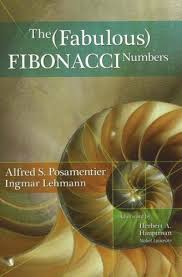All answers are basically given. I would like to add a very fast C++ example code.
The basis is the lookup mechanism that has been mentioned here several times already.
With Binet's formula, we can calculate that there are only very few Fibonacci numbers that will fit in a C++ unsigned long long data type, which has usually 64 bit now in 2021. Roundabout 93. That is nowadays a really low number.
With modern C++ 17 (and above) features, we can easily create an std::array of all Fibonacci numbers for a 64bit data type at compile time.
So, we will spend only 93*8= 744 BYTE of none-runtime memory for our lookup array.
And then use std::binary_search for finding the value. So, the whole function will be:
bool isFib(const unsigned long long numberToBeChecked) { return std::binary_search(FIB.begin(), FIB.end(), numberToBeChecked); }
FIB is a compile time, constexpr std::array. So, how to build that array?
We will first define the default approach for calculation a Fibonacci number as a constexpr function:
// Constexpr function to calculate the nth Fibonacci number constexpr unsigned long long getFibonacciNumber(size_t index) noexcept { // Initialize first two even numbers unsigned long long f1{ 0 }, f2{ 1 }; // Calculating Fibonacci value while (index--) { // get next value of Fibonacci sequence unsigned long long f3 = f2 + f1; // Move to next number f1 = f2; f2 = f3; } return f2; }
With that, Fibonacci numbers can easily be calculated at runtime. Then, we fill a std::array with all Fibonacci numbers. We use also a constexpr and make it a template with a variadic parameter pack.
We use std::integer_sequence to create a Fibonacci number for indices 0,1,2,3,4,5, ....
That is straigtforward and not complicated:
template <size_t... ManyIndices> constexpr auto generateArrayHelper(std::integer_sequence<size_t, ManyIndices...>) noexcept { return std::array<unsigned long long, sizeof...(ManyIndices)>{ { getFibonacciNumber(ManyIndices)... } }; };
This function will be fed with an integer sequence 0,1,2,3,4,... and return a std::array<unsigned long long, ...> with the corresponding Fibonacci numbers.
We know that we can store maximum 93 values. And therefore we make a next function, that will call the above with the integer sequence 1,2,3,4,...,92,93, like so:
constexpr auto generateArray() noexcept { return generateArrayHelper(std::make_integer_sequence<size_t, MaxIndexFor64BitValue>()); }
And now, finally,
constexpr auto FIB = generateArray();
will give us a compile-time std::array<unsigned long long, 93> with the name FIB containing all Fibonacci numbers. And if we need the i'th Fibonacci number, then we can simply write FIB[i]. There will be no calculation at runtime.
The whole example program will look like this:
#include <iostream> #include <array> #include <utility> #include <algorithm> #include <iomanip> // ---------------------------------------------------------------------- // All the following will be done during compile time // Constexpr function to calculate the nth Fibonacci number constexpr unsigned long long getFibonacciNumber(size_t index) noexcept { // Initialize first two even numbers unsigned long long f1{ 0 }, f2{ 1 }; // calculating Fibonacci value while (index--) { // get next value of Fibonacci sequence unsigned long long f3 = f2 + f1; // Move to next number f1 = f2; f2 = f3; } return f2; } // We will automatically build an array of Fibonacci numbers at compile time // Generate a std::array with n elements template <size_t... ManyIndices> constexpr auto generateArrayHelper(std::integer_sequence<size_t, ManyIndices...>) noexcept { return std::array<unsigned long long, sizeof...(ManyIndices)>{ { getFibonacciNumber(ManyIndices)... } }; }; // Max index for Fibonaccis that for an 64bit unsigned value (Binet's formula) constexpr size_t MaxIndexFor64BitValue = 93; // Generate the required number of elements constexpr auto generateArray()noexcept { return generateArrayHelper(std::make_integer_sequence<size_t, MaxIndexFor64BitValue>()); } // This is an constexpr array of all Fibonacci numbers constexpr auto FIB = generateArray(); // All the above was compile time // ---------------------------------------------------------------------- // Check, if a number belongs to the Fibonacci series bool isFib(const unsigned long long numberToBeChecked) { return std::binary_search(FIB.begin(), FIB.end(), numberToBeChecked); } // Test int main() { const unsigned long long testValue{ 498454011879264ull }; std::cout << std::boolalpha << "Does '" <<testValue << "' belong to Fibonacci series? --> " << isFib(498454011879264) << '\n'; return 0; }
Developed and tested with Microsoft Visual Studio Community 2019, Version 16.8.2
Additionally tested with gcc 10.2 and clang 11.0.1
Language: C++ 17

